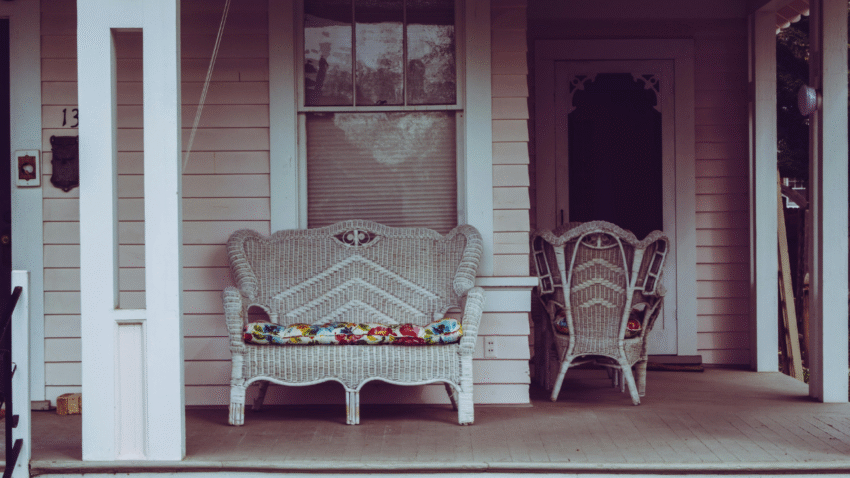Introduction
A beautiful patio should be a place to relax, not a spot for puddles, mud, or erosion. But without proper drainage, rainwater can collect and cause serious issues. Learning how to fix patio drainage problems is essential to protect your outdoor investment, improve safety, and extend the life of your patio. If you’ve ever stepped outside after a storm and found standing water, slippery surfaces, or shifting pavers, this guide will show you practical solutions to restore proper drainage and prevent future problems.
Why Patio Drainage Matters
Drainage is one of the most overlooked but critical elements of patio design and maintenance. Poor drainage leads to:
- Standing water: Creates slippery hazards and damages surfaces.
- Erosion: Washes away sand or gravel bases, leading to sinking sections.
- Mold and mildew: Thrive in damp areas, discoloring stone and pavers.
- Foundation risks: Water pooling near your home can damage the foundation.
- Shortened patio life: Constant moisture weakens materials over time.
By fixing drainage issues, you:
- Keep your patio safe and functional.
- Protect surrounding landscaping and your home’s structure.
- Save money on costly repairs later.
Step-by-Step Guide to Fixing Patio Drainage Problems
1. Identify the Drainage Issue
The first step is diagnosing the problem. Common signs include:
- Water pooling on the patio surface after rain.
- Soil erosion at patio edges.
- Moss, algae, or mildew growth.
- Pavers sinking or shifting.
Observe your patio during or after rainfall to see how water flows and where it collects.
2. Improve the Patio Slope
One of the simplest fixes is correcting the patio’s slope. A patio should slope slightly away from the house—about 1/8 to 1/4 inch per foot.
If the slope is insufficient:
- Remove pavers or slabs in the affected section.
- Regrade the base with sand or gravel, creating the proper slope.
- Reset the pavers or slabs securely.
This small adjustment often eliminates pooling issues.
3. Add Permeable Joint Sand
If water is sitting on the surface rather than draining between pavers, the joints may be clogged or filled with non-permeable material. Replace with polymeric sand or permeable joint filler that allows water to pass through while keeping weeds out.
4. Install a French Drain
For severe water pooling or runoff problems, install a French drain:
- Dig a trench along the patio edge or low point.
- Line it with landscape fabric.
- Fill with gravel and lay a perforated drain pipe.
- Cover with more gravel and soil or decorative stone.
This directs water away from the patio and into a safe drainage area.
5. Use Channel Drains
For patios directly against a house or with large runoff areas, channel drains (also called trench drains) are highly effective:
- Install at the patio’s lowest edge or near doorways.
- Connect the drain to a pipe system that carries water away.
- Cover with grates to prevent clogging while maintaining a clean look.
6. Add a Dry Well or Rain Garden
If you don’t have storm drains nearby, consider alternatives:
- Dry well: An underground pit filled with gravel that slowly disperses water.
- Rain garden: A shallow, planted area near the patio designed to absorb runoff naturally.
Both eco-friendly options reduce water buildup and improve landscaping aesthetics.
7. Aerate Surrounding Soil
Compacted soil around your patio may prevent proper drainage. Aerating or loosening the soil improves water absorption and reduces runoff toward the patio.
8. Maintain Gutters and Downspouts
Sometimes the problem isn’t the patio itself but excess water from the roof. Ensure:
- Gutters are clean and not overflowing.
- Downspouts extend at least 5–10 feet away from the patio.
- Splash blocks or extensions direct water safely downhill.
9. Seal and Protect Patio Surfaces
Sealing pavers, stone, or concrete makes them more water-resistant and prevents erosion from constant moisture. Apply a breathable, outdoor-grade sealer every 2–3 years.
Common Mistakes to Avoid
- Mistake: Ignoring the slope.
Solution: Always ensure the patio slopes away from the house. - Mistake: Using soil as a base filler.
Solution: Use gravel and sand, which compact better and allow drainage. - Mistake: Directing water toward the house.
Solution: Redirect all drains and slopes away from your home’s foundation. - Mistake: Forgetting regular maintenance.
Solution: Clear drains, sweep joints, and check for erosion each season. - Mistake: Over-relying on sealants.
Solution: Sealants protect surfaces but don’t solve underlying drainage issues.
Extra Patio & Deck Tips & Hacks
- Quick Fix: If pooling happens in one small area, lift a few pavers, add gravel, and reset them to improve drainage.
- Preventative Maintenance: Sweep polymeric sand into joints annually to reduce erosion.
- Eco-Friendly Option: Plant groundcover or shrubs around patio edges to absorb excess water.
- Related Guide: For more foundation insights, check out our article on How to Choose the Right Foundation for a Patio.
Conclusion
Fixing patio drainage problems may require a little work, but the payoff is a safer, longer-lasting outdoor space. By adjusting slopes, adding drains, using permeable materials, and maintaining surrounding landscaping, you’ll eliminate standing water and protect your investment.
Address drainage now, and you’ll enjoy a clean, dry, and worry-free patio in every season.
